
-
Find the right food for your petTake this quiz to see which food may be the best for your furry friend.Find the right food for your petTake this quiz to see which food may be the best for your furry friend.Health CategoryFeatured products
 Adult 7+ Small Bites Chicken Meal, Barley & Rice Recipe Dog Food
Adult 7+ Small Bites Chicken Meal, Barley & Rice Recipe Dog FoodSupports energy level and beautiful coat in mature dogs who prefer smaller kibble
Shop Now Adult Small Bites Chicken & Barley Recipe Dog Food
Adult Small Bites Chicken & Barley Recipe Dog FoodSupports lean muscle for dogs who prefer smaller kibble
Shop Now Adult Oral Care Small & Mini Chicken, Rice & Barley Recipe Dog Food
Adult Oral Care Small & Mini Chicken, Rice & Barley Recipe Dog FoodClinically proven kibble technology to reduce plaque & tartar build-up, specially designed for small & mini dogs
Shop NowFeatured products Sensitive Stomach & Skin Chicken & Beef Dinner
Sensitive Stomach & Skin Chicken & Beef DinnerGourmet daily nutrition, carefully made. Tasty chunks with chicken & beef in a decadent gravy. Supports digestive health, nourishes skin and promotes a lustrous fur.
Shop Now Adult 7+ Tender Tuna Dinner Cat Food
Adult 7+ Tender Tuna Dinner Cat FoodWith delicious chunks in a decadent gravy
Shop Now Adult Chicken & Spinach Casserole Cat Food
Adult Chicken & Spinach Casserole Cat FoodWith delicious chunks in a decadent gravy
Shop Now -
DogCat
- Cat Tips & Articles
-
Health Category
- Weight
- Skin & Food Sensitivities
- Urinary
- Digestive
- Kidney
- Dental
- Serious Illness
-
Life Stage
- Kitten Nutrition
- Adult Nutrition
Featured articles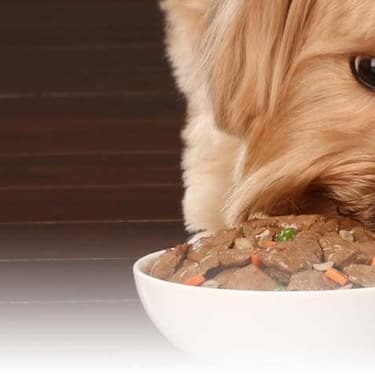 Pet Food Storage Tips
Pet Food Storage TipsWhere you store your cat and dog food can make a big difference in the quality and freshness once it is opened. Here are some common questions and recommendations for optimal storage for all of Hill’s dry and canned cat and dog food.
Read MoreHill's Australian Bushfire EffortsRead More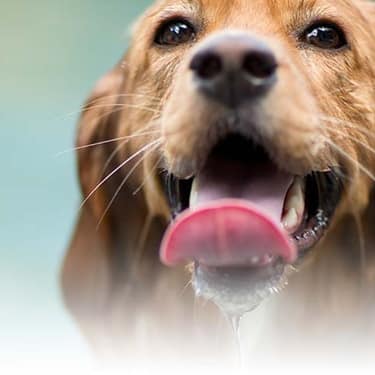 Water
WaterWater is the most important nutrient of all and essential for life. Animals can lose almost all their fat and half their protein and still survive, but if they lose 15% of their water, it will mean death.
Read More -


No pet parent likes to hear that sound: the hacking noise from the other room that tells you are going to have a mess to clean up. When your cat starts gagging, the first thought that might go through your head is, "Oh no, what did she get into now?" There are many reasons why your cat might throw up, some of them more serious than others. As a new pet parent, it is important to know the types of cat vomit and when an upchuck warrants a visit to the veterinarian.
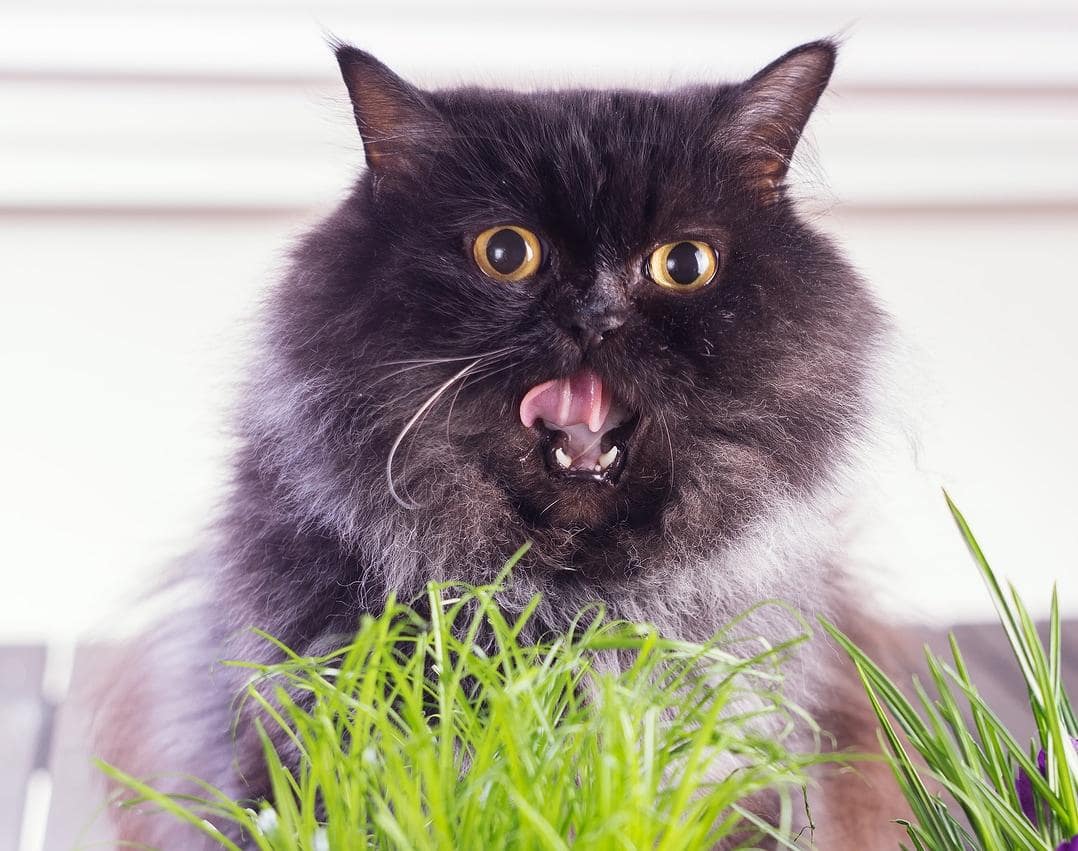
Hairballs: A Common Cause of Cat Vomiting
Even as a seasoned cat parent, it is important to understand the reasons behind cat vomiting. As cats age, their bodies change, and their vomit may be a way to tell you if those changes are normal or abnormal.
Although cat vomiting might be due to eating a part of a houseplant or ingesting a piece of a toy, your cat can get an upset stomach from over grooming. This most often resurfaces as a hairball.
Although a cat vomiting up a hairball every so often is normal, there are times when you may need to be concerned. Hairballs shouldn't be painful, frequent or difficult for your cat to pass. Untreated hairballs can also go the other way and cause painful intestinal blockages in extreme cases, according to The Nest, so keep track of your cat's normal routine and watch out for signs of constipation, lethargy, and anorexia if she has not passed a hairball in a while. If your cat has a consistent hairball problem, you might want to look into a cat food that is formulated for hairballs.
Cat Vomit Diagnostic Hacks
A hairball every now and then (often with foamy or yellow liquid) may not be a reason to call your vet, but if your cat starts having frequently, such as once a week, or the hairballs are large and seem to be causing your pet discomfort, you may want to have your feline friend in for a checkup.
According to the Cornell Feline Health Center, most vets start by determining if the vomit problem is related or unrelated to hairballs. They then move to discussing possible ingestion of harmful objects or substances in your home, and finally, if needed, they progress to X-rays or ultrasounds to find the problem.
It's helpful to know that most vets will approach cat vomiting this way so that you can gather useful information prior to calling for an appointment. When you call the vet, be prepared to describe your cat's recent surroundings, activities and vomiting frequency and appearance.


Tasty Tips
Other Reasons for Cat Vomit
If your cat barfs, but resumes regular activities and continues to eat and seem otherwise healthy, you (and she) may not have much to worry about. However, in some cases, frequent or excessive vomiting may be the result of a serious condition.
Vomit is vomit, but the color and contents of it can be very telling to what is causing your cat to throw up. For instance, yellow and foamy usually means hairball, but thick yellow bile can be a sign of a serious kidney problem or infection, says Washington State University College of Veterinary Medicine. If this yellow vomit is accompanied by lethargy, loss of appetite, increase of appetite or abnormal behavior, you should seek medical attention for your cat immediately.
One other scenario in which your cat might vomit is undigested food. Sometimes your pet may just eat too fast and expel her entire meal. This is referred to as regurgitation — it happens with many cats and usually is not an alarming issue. You may simply need to feed her smaller and more frequent meals to convince her to slow down.
In rare cases, internal parasites could be causing vomiting. Your vet may need to take a skin scrape or do blood work to rule out parasites.
Food Allergies
Some cats can also experience digestive turmoil from food sensitivities and allergies. Pay close attention to any behaviors your cat exhibits before and after eating. Besides vomiting, does she have diarrhea, bald patches or itchy skin? Discuss these observations with your vet and take your vet's advice on food changes.
Some cats may need a special or therapeutic food to resolve the problem. Others may need more intensive tests or medications to resolve the issue and reduce the vomiting. Do not attempt to diagnose your cat's allergy at home, since changing her food on your own could end up upsetting your cat's stomach more if not done properly.
Always err on the side of caution, and if something doesn't seem right, get your cat to the vet immediately. Although cat vomit is caused by these easily solved issues, every cat is different and your vet is the person best qualified to diagnose the underlying issue that is causing your cat to throw up.
Ways to Prevent Cat Vomiting
Wouldn't all pet parents love to know the secret to eliminating pet vomit? Or even a way to train your cat not to do it on your bed or carpet? Unfortunately, there's no magic word. But there are a few things you can try to ease your cleanup and your kitty's discomfort.
The easiest vomit comet to stop is hacking up hairballs. By brushing your cat regularly, keeping her active and feeding her food with balanced nutrition, you may be able to reduce the number of hairballs.
When it comes to regurgitating, make sure you feed your cat at the same time every day. Give her the amount of food recommended by your vet and have clean, fresh water available at all times. A cat that is experiencing frequent upset could become dehydrated. While most cats will get the majority of their water from their food, throwing up could result in loss of water, so make sure to give her plenty of access to water and encourage her to drink when possible. These three simple actions can go a long way in preventing overeating or eating too quickly. For a cat who still bolts her food, you can try a puzzle feeder or a dry food with large, crunchy pieces to slow her down.
Special foods or medication prescribed by your vet may also help relieve underlying health issues or allergies that lead to your cat vomiting. Be sure your cat sees the vet regularly and discuss your concerns.
Though cleaning up messes and bodily fluids is something all pet parents will experience at some point, following these tips and knowing when to seek the help of a professional can hopefully make these experiences few and far between.


Chrissie Klinger is an educator, writer and mother of two children, three dogs and three cats. Her dog Jake loves sitting on her lap every chance he gets! She enjoys living an active and eco-friendly lifestyle in rural Pennsylvania.
Related products

With delicious chunks in a decadent gravy

Gourmet daily nutrition, carefully made. Tasty chunks with chicken & beef in a decadent gravy. Supports digestive health, nourishes skin and promotes a lustrous fur.

With delicious chunks in a decadent gravy

With delicious chunks in a decadent gravy
Related articles
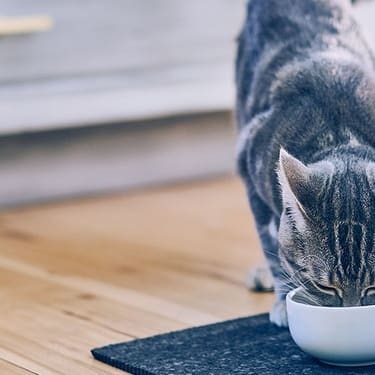
Good nutrition is about the right balance of nutrients. Learn more about health issues when feeding a cat food that has an improper nutritional balance from your friends at Hills Pet Nutrition.
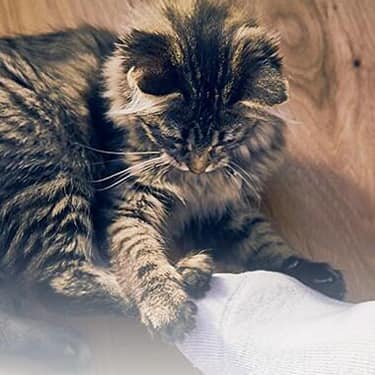
Discover which cat toys games your feline friend might like, and how they are great sources of exercise. Explore our library of articles to learn more.
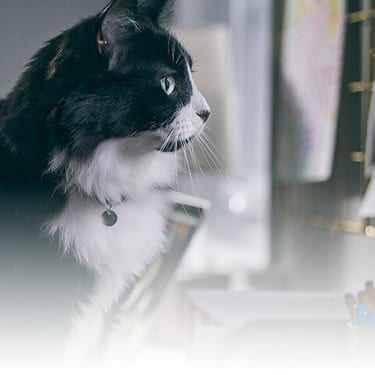

Are you looking to get your cat more active? Does she constantly look bored? Then you may want to consider using a food-dispensing (also known as treat-dispensing) cat toy, which provides both physical and mental stimulation during snack times.
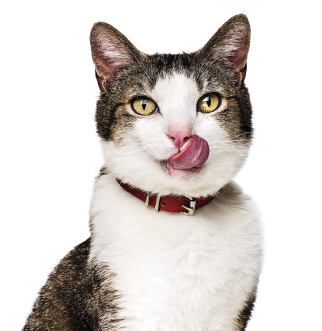
Put your cat on a diet without them knowing
Our low calorie formula helps you control your cat's weight. It's packed with high-quality protein for building lean muscles, and made with purposeful ingredients for a flavorful, nutritious meal. Clinically proven antioxidants, Vitamin C+E, help promote a healthy immune system.
Put your cat on a diet without them knowing
Our low calorie formula helps you control your cat's weight. It's packed with high-quality protein for building lean muscles, and made with purposeful ingredients for a flavorful, nutritious meal. Clinically proven antioxidants, Vitamin C+E, help promote a healthy immune system.

